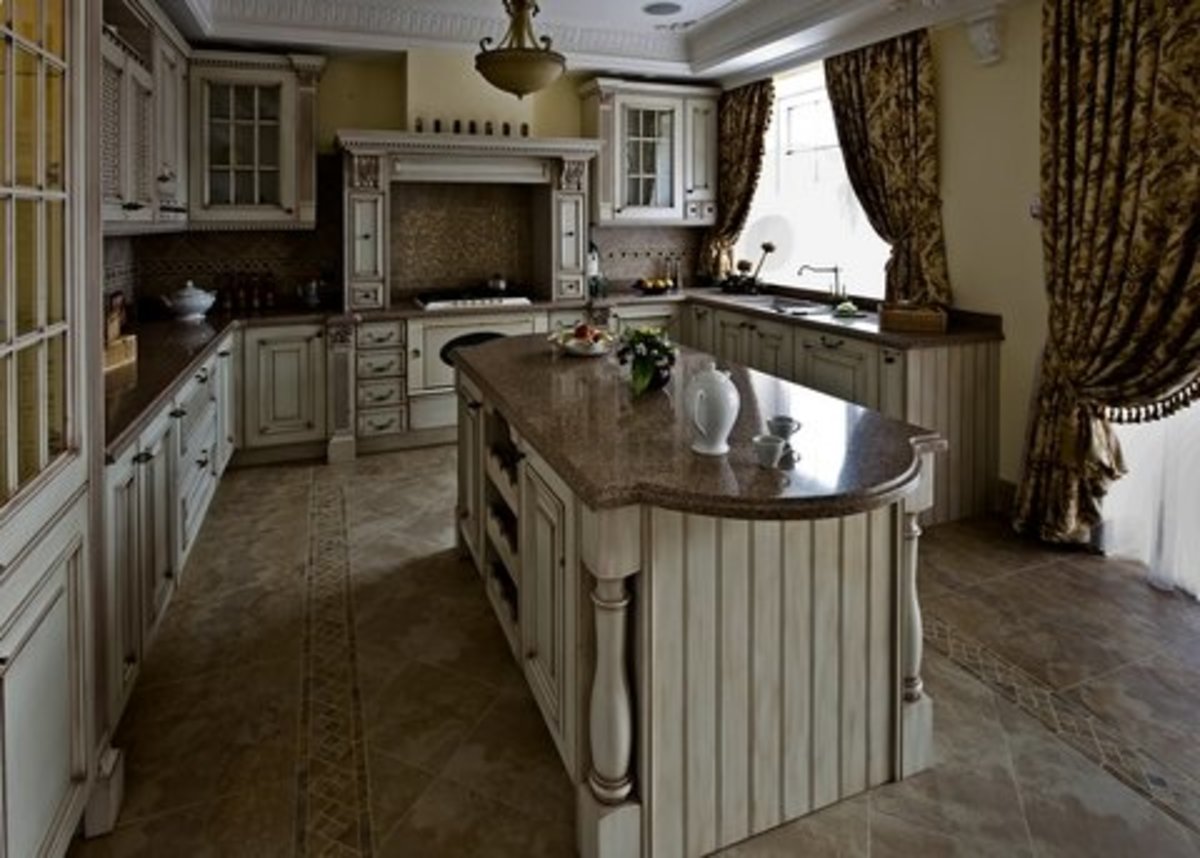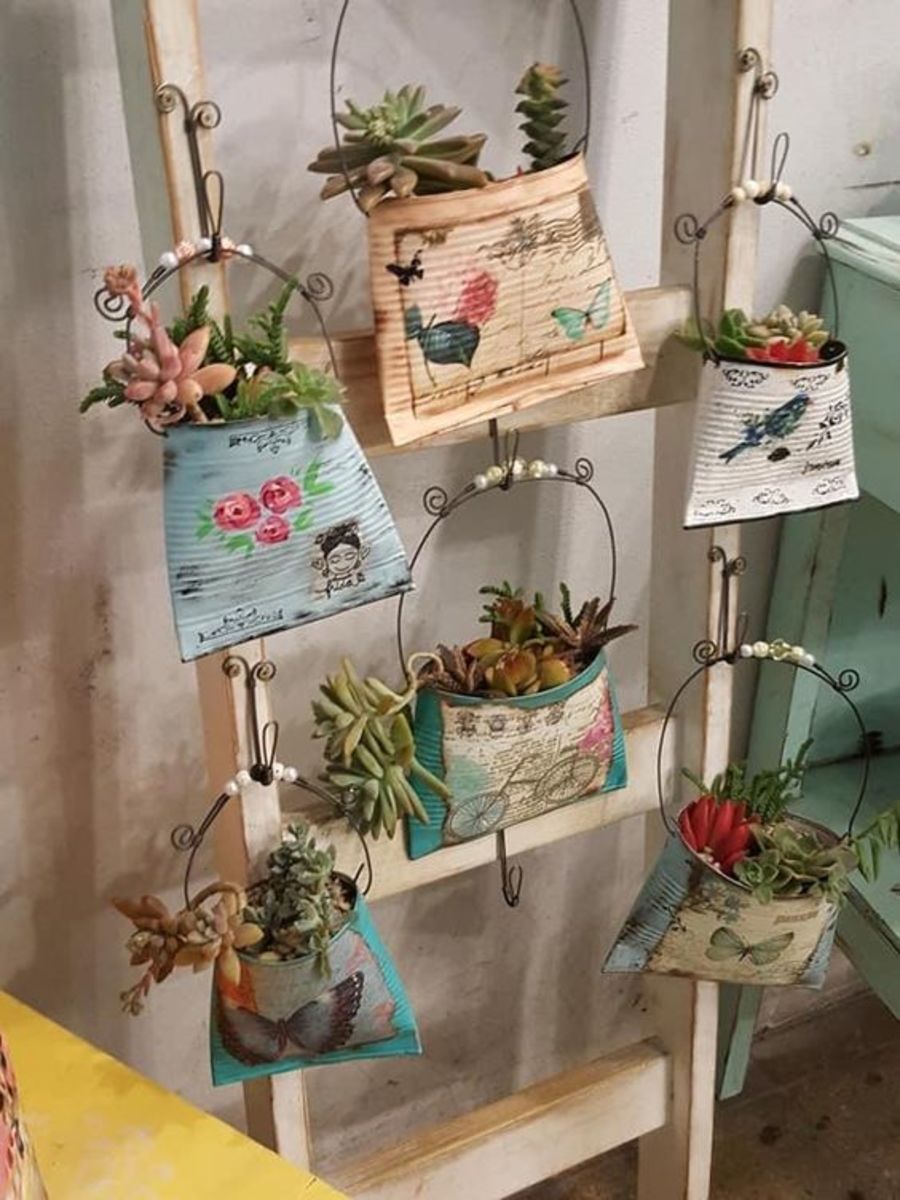Faux Painting: Make Your Cheap Laminated Furniture Look Like Beautiful Solid Wood
Faux Painting: Make Your Cheap Laminated Furniture Look Like Beautiful Solid Wood
Laminated furniture is easy to come by at most super stores. It’s convenient and serviceable, and a cheap option if you’re not ready to buy higher quality furniture sets. The problem is, it looks cheap. It’s not very attractive and doesn’t give your home any character.
You don’t have to live with it, though. With a little faux painting, you can totally transform the look of your bland laminate furnishings to make it look like solid wood.
Wood graining tools
What You’ll Need
You can use your own laminated furniture, or pick up inexpensive pieces from thrift shops or department stores. Don’t worry if they’re used and a bit scratched or scuff; you can get them for a bargain and your faux paint job will make them look perfect.
For best results, and to save your arm from exhaustion, you’ll need an electric sander. A small palm sander or orbital sander will suffice. You’ll also need a package of medium grit (60 to 80 grain) sandpaper and a package of fine grain (100 to 120 grain) sandpaper.
Get a quality bonding primer, such as shellac or acrylic. Be sure not to purchase an alkaloid or oil primer; use water-based only.
You’ll need a base coat in the color of your choice, and an additional color for the wood grain (more on color selection tips below). It must be a satin finish. Satin is just the right slickness and sheen to make the glaze go on easily and look realistic when it dries.
Get a quart of water-based acrylic clear glaze. These glazes are wonderful for faux paint jobs and creating a variety of different patterns and designs. Don’t attempt to do the project without glaze as the markings will not come out very well.
You’ll need an assortment of inexpensive, specialized faux wood graining tools. The easiest to use of these tools are the combs and the rockers.
The combs have short teeth, sometimes two- or three-sided. The teeth on each side are spaced out differently for creating a finer grain or wider grain effect all with one tool.
A rocker is like a curved block of wood with a rubber grain pattern on it. They come in different sizes and styles, so choose ones you like. They slide through tinted glaze and create elongated graining designs— even knotholes. You might be surprised and impressed at just how easy and fun it is to work with these tools.
Finally, you’ll need a clear acrylic sealer spray. Get a glossy finish to make your wood have a polished appearance. Use a brand that is labeled non-yellowing and with UV protection; this will keep your piece from discoloring.
Other than that, you’ll need your standard painting tools: rollers, roller pan, rags, tarps or drop cloths. If you have tight edges to get into, use a paint brush.
Step 1: Sanding
If you’ve ever tried painting laminate only to discover it peeling and looking more like a mess than it did when you got it, then you know it’s not an easy task. Since laminated surfaces are slick and non-porous, paint doesn’t adhere well to them. You won’t have to touch it much before wear and tear starts setting in.
You can paint laminate and veneer; but they take a bit of effort and elbow grease in the preparation stage in order to make the paint job durable.Sanding is the key ingredient to success.
Thoroughly scuff up the surface. Start with a medium grit sandpaper, and once all the shine has been dulled, switch to a fine grit paper and go over the piece again.
Use a dust mask and protective eyewear— you don’t want to inhale plastic dust or get it in your eyes. Work in a well-ventilated area, too, and stop occasionally to vacuum up the dust. Once the entire piece is completely sanded on every surface, wipe it clean with a damp cloth several times. That leftover dust will also prevent the paint from adhering. Get rid of all dust and let the piece dry.
Step 2: Priming
To further ensure paint adheres well, use a quality bonding primer. A white pigmented shellac is a good choice, though you can also make do with an acrylic primer.
Use a roller with a 3/8 inch nap to apply the primer. Let it dry a full 24 hours before painting on it.
Step 3: Base Coat
To choose an appropriate color for the base coat, look at wood samples and decide what color you like— a sandy/yellowish honey oak? A dark brown cherry wood color with reddish highlights? Pick up a paint color similar in shade to your desired wood color. Get it in a satin finish latex paint.
Paint on a base coat and let it dry. Apply a second coat, and then give it ample drying time as well. Leave it for a few hours, or overnight.
Step 4: Glaze
Choose another satin finish latex paint color. Get one about 2 shades darker than the one you have for darker grain lines, or a couple of shades lighter for lighter wood grain lines. Mix it 50/50 with a clear, water-based acrylic glaze and stir until they’re thoroughly combined.
Work with the glaze on side of your piece of furniture at a time. If you apply glaze to the whole piece, it might begin to dry before you get to do the wood graining technique. Instead, work on one entire shelf, one drawer face, or the top surface of the piece. Decide which section you want to begin on, and then roll on the glaze.
Create Faux Wood Grain
Step 5: Wood Graining
Here’s the fun part. Take your wood graining tool of choice and drag it through the wet glaze. If you’re using a wood graining comb, just hold it on a 45 degree angle and pull it across the grain. If you’re working with a wood grain rocker, start at one end and rock the tool back and forth gently as you pull it through the glaze.
It doesn’t have to be perfect. Wood grain comes from nature— and nature doesn’t make natural wood all straight and even, so you should not worry about your lines being a little crooked or having a little variation.
Don’t worry about mistakes—you can simply pull the comb or the rocker right over the glaze a second time, erasing the first attempt and creating a new attempt simultaneously. It’s very forgiving, so you can just keep going over the same section until you like what you see. If it’s getting a bit dry, roll on another coat of glaze and try again.
Comb or rock down (or across) your glazed surface row by row to give it a wood board plank effect. After you finish one surface, apply glaze to a second surface. Use the wood grain rocker or grain combs again to create more wood graining pattern.
Continue the process until you are satisfied with the results. Alternate the tools to give each “board” a slightly different look. You don’t want it all identical or it won’t look natural, it will look like a repeating pattern.
Let the glaze dry thoroughly. Let the piece cure for a few days. Don’t put anything on top of it, such as heavy books, which can settle in and damage the surface.
Fabulous Faux Wood Grain-HGTV
Clear Acrylic Sealer Spray
Step 6: Sealer
Bring your entire piece outdoors, or into a garage. You’ll need a very well-ventilated area to apply the sealer. If you can’t bring it outdoors, bring it where you can open windows and doors to create a cross breeze for ventilation. Put it on a drop cloth, and cover all the surrounding furniture and fabrics with drop cloths or newspapers.
Hold the can of acrylic sealer upside-down and shake it vigorously for about 2 minutes. Start at the top and hold the can nozzle about 14 inches from the furniture surface. Depress the nozzle and sweep your arm back and forth as you work your way down the piece. Spray it on with a sweeping motion, never letting your arm stop or settle. Pay attention to thoroughly covering one surface or one side at a time.
Let it sit, untouched, for 24 hours. Spray on a second coat of acrylic sealer, shaking the can thoroughly and applying it in the same manner. Two coats will suffice, but a third coat is ideal if you can let it stand untouched for another night.
Give the sealed surface a couple of days to cure before putting anything heavy on it.
Put your furniture back in place and decorate it. Your home will look like you’ve gotten a brand new solid wood furniture set.









